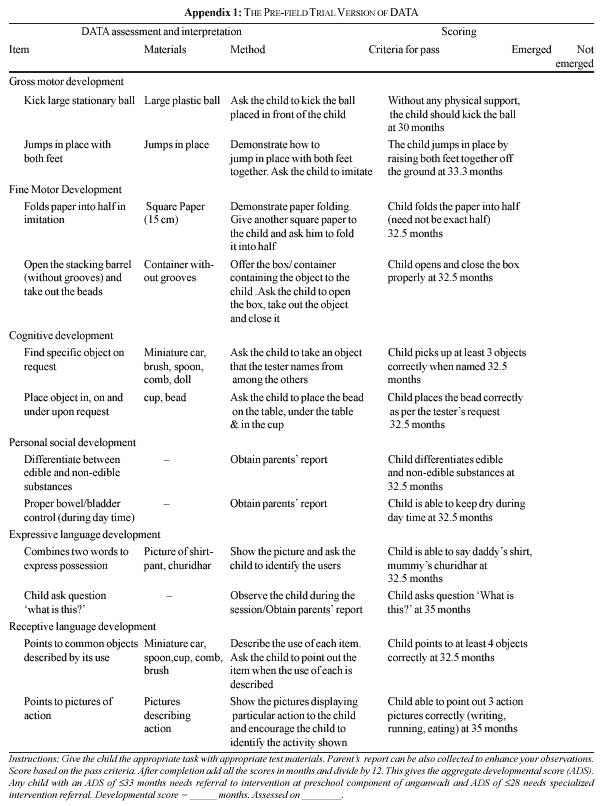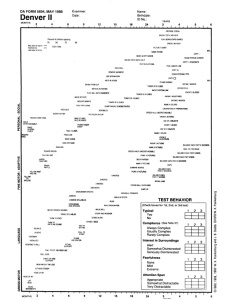
Scores are recorded per item through direct observation of the child and in some cases what the parent reports.The number of scores a child received below the normal expected range classifies the child as within normal, suspect, or delayed.Items involved 90% performance rate for inclusion in the screen.Some items for the youngest ages do not have percentile ranks.Ages should be adjusted for prematurity as needed. Percentile ranks include: 25 th, 50 th, 75 th, and 90 th.These lines represent the normative data and the percentile ranks. These items are scored to a normative age line with notation to caution, advanced and delayed items.R: Refusal-the child refuses to attempt and the parent cannot report.NO: No opportunity-the child has not had the opportunity to perform the task due to restrictions.F: fail-child does not successfully perform the item and/or the caregiver reports the child cannot do the item.P: pass-child successfully performs item or caregivers reports the child can do the item.There are 125 performance-based and parent reported items on the test in the following four areas of functioning: fine motor-adaptive, gross motor, personal-social, and language skills.Items are in sub-sample categories including race, less educated parents, and place of residence.Children are given up to 3 trials per task before moving on.Administrators are to have child perform easies tasks first and praise the child’s efforts despite success or failure.



The estimated consistency coefficient between DDST-II and ASQ was 0.21, which is weak, and between DDST-II and the physicians' examination was 0.44. Obtained data was analyzed by SPSS software.ĭevelopmental disorders were observed in 34% of children who were examined by DDST-II, and in 12% of children who were examined by ASQ test.

Because ASQ is designed to use for 4-60 month- old children, children who were out of this rang were evaluated by developmental pediatricians. In order to determine the agreement coefficient, these children were also evaluated by ASQ test. Then, DDST-II was performed on 221 children ranging from 0 to 6 years, in four Child Health Clinics, in north, south, east and west regions of Tehran city. This research was designed to identify the validity and reliability of the Persian version of Denver Developmental Screening Test II (DDST-II) in Iranian children, in order to provide an appropriate developmental screening tool for Iranian child health workers.Īt first a precise translation of test was done by three specialists in English literature and then it was revised by three pediatricians familiar with developmental domains.


 0 kommentar(er)
0 kommentar(er)
